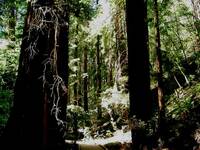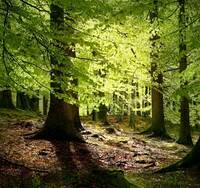- England
- Scotland
- France
- Holland
- Germany
- Italy
- Spain
- Portugal
- USA
- China
- Japan
- India
- Iran
- Advice
- Gardens
- England
- Scotland
- France
- Holland
- Germany
- Italy
- Spain
- Portugal
- USA
- China
- Japan
- India
- Iran
- Advice
- Garden Tours
Book: Landscape Planning and Environmental Impact Design: from EIA to EID
Chapter: Chapter 8 Forest design, forestry and sylviculture
With this, again, comes forestry: no mere tree-cropping, but silviculture, arboriculture too, and park-making at its greatest and best.
Patrick Geddes (Geddes 1915: 95).
Woods and forests can be the most wonderful places: beautiful and productive, with sparkling streams, bright pools, dark swamps, open glades, black groves, broad moors and high mountains. They can have fresh seedlings, thrusting saplings, mature trees, ancient trees and rotting trees with fascinating fungi. Animal life should be a great part of the forest: insects, fish, birds, mice, squirrels, badgers, foxes and deer. They need a wide range of habitats with great plant diversity. Fungi transform dead wood into new soil. In many cultures, forests are the locale of wonder tales [Fig 8.1]. A young man sets off from home, encounters first danger and then mysterious help in the forest, sleeps under a great tree, drinks from a pool, meets a wise old woman in a sunny clearing, she has magical powers, he undertakes acts of bravery, emerges from the forest, marries the king's daughter and lives happily ever after. Across cultures, the structural pattern of wonder tales is remarkably similar. The stories derive from man's past as a forest dweller and reflect a world view, in which life is seen as a pattern of good and evil, light and dark, hope and fear, effort and reward. They have not been forgotten and many of us wish for more access to woods and forests. Those who clear-fell forests assault the human psyche: The global problem of deforestation provokes unlikely reactions of concern these days among city dwellers, not only because of the enormity of the scale but also because in the depths of cultural memory forests remain the correlate of human transcendence. We call it the loss of nature, or the loss of wildlife habitat, or the loss of biodiversity, but underlying the ecological concern is perhaps a much deeper apprehension about the disappearance of boundaries, without which the human abode loses its grounding... Without such outside domains, there is no inside in which to dwell (Harrison 1992: 247).

